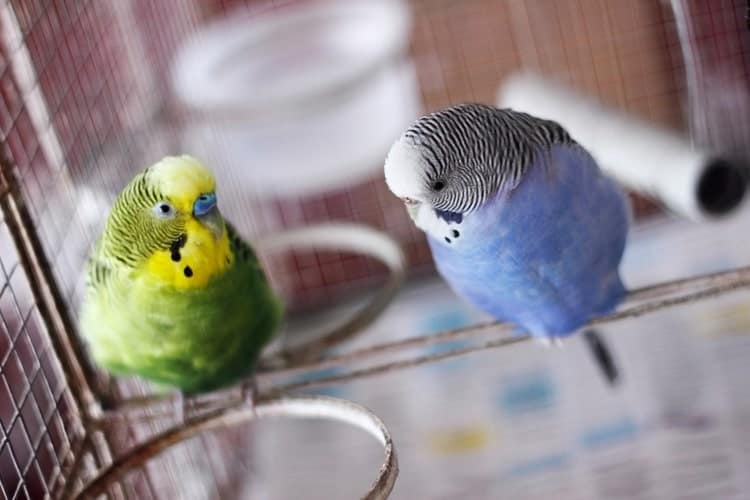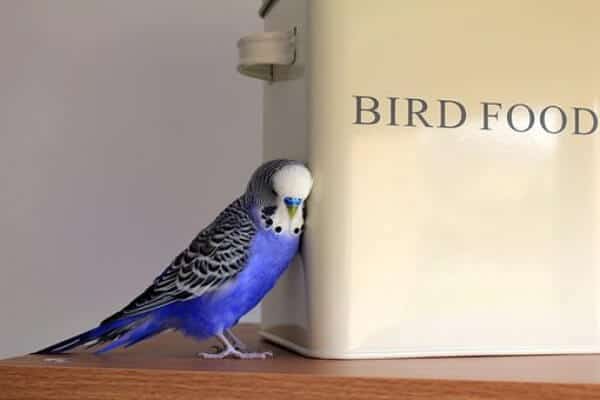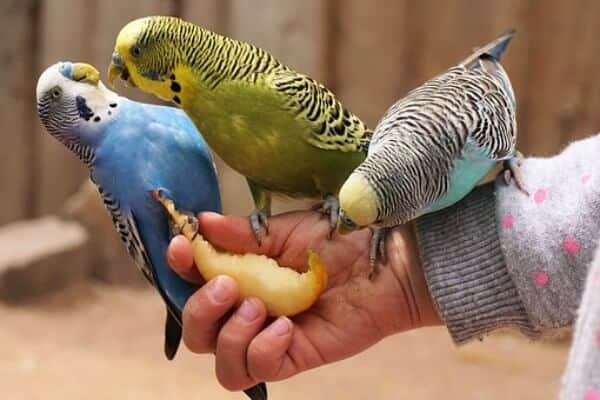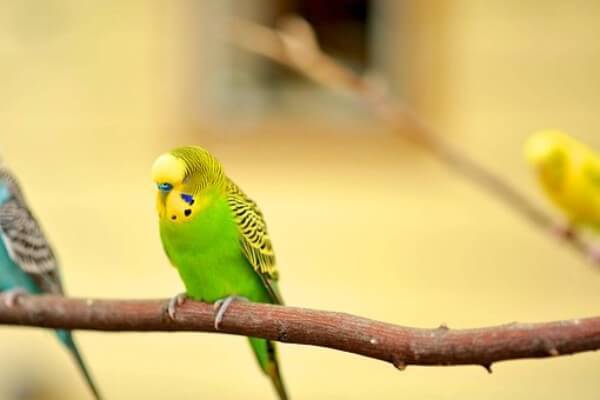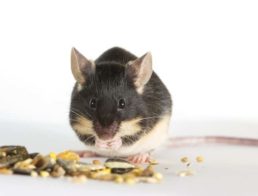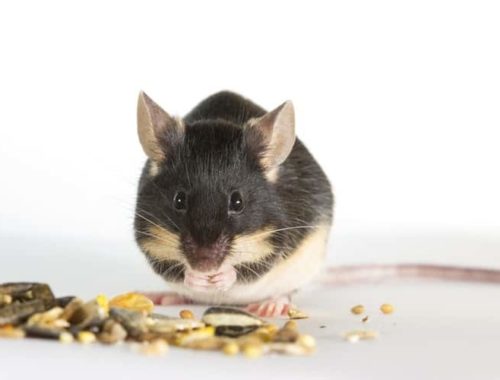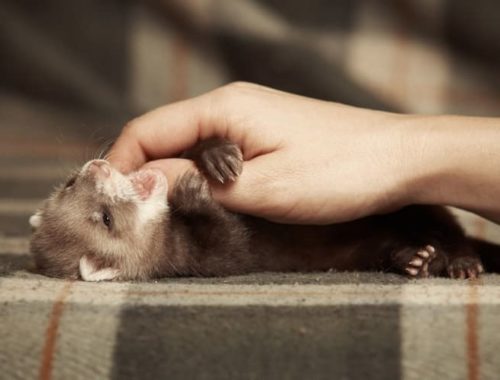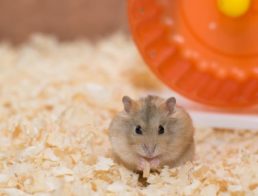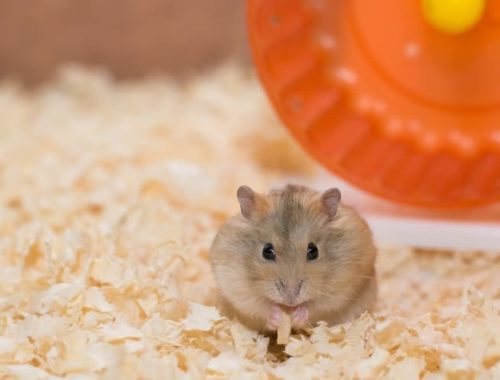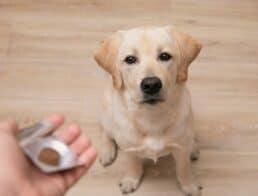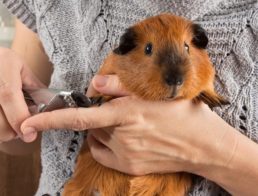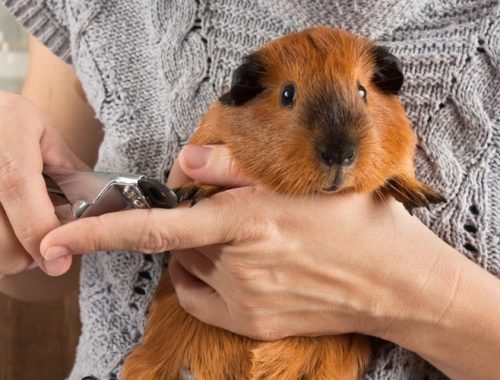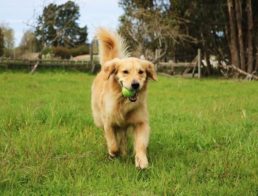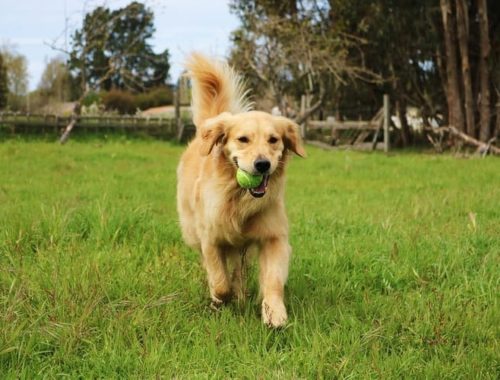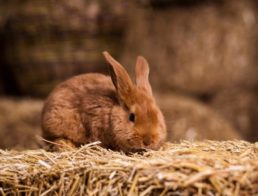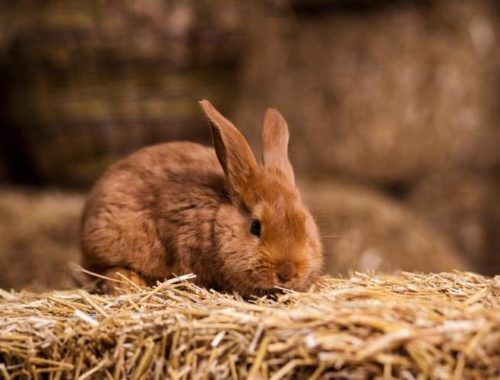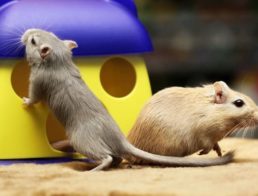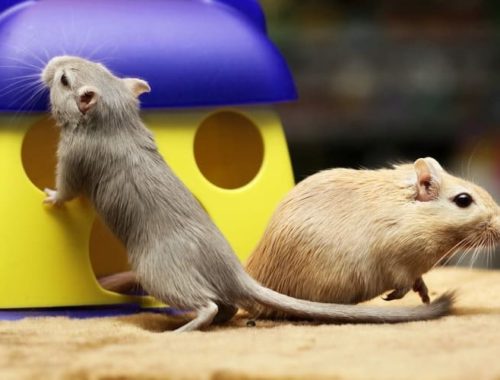Parakeets, which are also called budgies, are a popular type of bird to keep as a pet, particularly for those who haven’t owned a bird before. They are usually cheerful, require less maintenance than some of the other pet birds, and aren’t as susceptible to illnesses as some other types of birds. If you are considering getting a pet parakeet, read this handy guide to find out how to care for your new pet.
How to Set Up for Your Parakeet
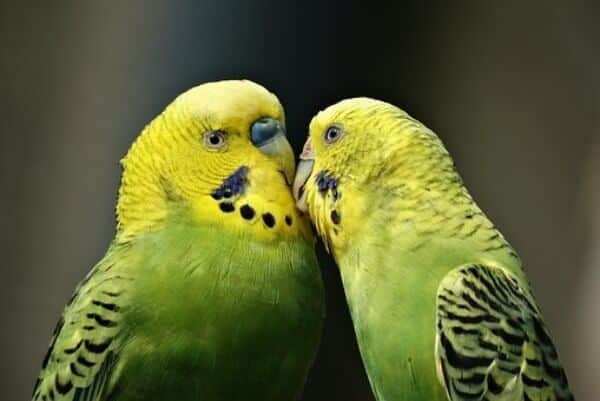
- Buy the correct kind of cage. You will need to get a cage that is, at minimum, 20 x 18 x 18 if you have one parakeet. If you will be getting two, the cage should be a minimum of 30 x 18 x 18. The wires of the cage should be no more than 1/2″ apart because if the spaces are any larger, your pet could get his head stuck.
- Purchase at least three perches. Your pet will want to perch on different types of materials. Look for natural and man-made materials, but avoid perches with sand on them.
- Add two metal food bowls that attach to the cage. You will need to keep wet or moist foods (such as fruits and vegetables) separate from the dry foods (such as pellets and seeds), so two bowls are necessary. These bowls will need to be made of a non-porous material that is easy to clean and disinfect. Stainless steel is the preferred option because they will not hold onto odors.
- Install a water bottle made for birds. While you can use a bowl of water, the water will quickly become contaminated by dropped food, feathers, and other debris, and would need to be changed several times per day. A water bottle will keep the water clean and safe for your bird.
- Buy a cuttlebone and a mineral block. Your bird will peck at a cuttlebone, which will provide valuable minerals that he needs for good health. A mineral block provides additional minerals, including calcium. Putting one of each of these in your pet’s cage will keep him happy and healthy.
- Choose toys for your parakeet. Your parakeet should have a variety of toys to play with. These are curious birds and need some entertainment to be happy. Look for chew toys, puzzle toys, and foraging toys. Parakeets often love looking at their reflection in a mirror, but some will become too attached to the bird in the mirror and won’t want to interact with humans, so it might be better to avoid this possibility. Do not choose toys with strings that your bird can get tangled up in.
- Place shredded or whole newspapers in the bottom of the cage. Choose a paper lining for your parakeet’s cage. You can use whole newspaper or, if you prefer, shredded newspaper. Whole sheets of paper have the advantage of being easy to roll up and dispose of. Shredded paper can absorb odors better. Both need to be changed every day or two.
- Do not use pine or cedar shavings. These are toxic to parakeets and they will tend to peck at the material, which can make the bird sick.
How to Feed Your Parakeet
- Use pellets as the mainstay of your parakeet’s diet. These pellets contain the proper micro and macro nutrients that your parakeet needs to stay healthy.
- Offer seeds in small amounts. Seeds are a fattening addition to your bird’s diet, so don’t give her more than a teaspoon or so per day. You can also use seeds as treats. Your parakeet will peck out the center of the seed and leave the shell in the bowl, so make sure you take out the empty shells daily.
- Add fresh fruits and vegetables to the daily diet. Your parakeet will enjoy fruits like melon, kiwi, apples, pears, oranges, and grapes. Leafy greens like kale, spinach, parsley and cabbage are an important part of your pet’s diet. Other vegetables she might enjoy include carrots and celery. These foods should make up 10 to 15 percent of your bird’s diet, with an emphasis on the vegetables and just a bit of fruit each day.
- Keep your parakeet’s bowls clean and sanitized. Wash out the bowls every day with soap and water. Be sure to rinse very well. If you have stainless steel bowls, you can boil them weekly to sanitize them.
- Supply fresh, clean water at all times.
How to Handle Your Parakeet
- Talk to your parakeet frequently. Let him get used to the sound of your voice. Talk to him about anything; it doesn’t matter. Since this is what will eventually encourage him to repeat what you say, be mindful of the words you are using and only use phrases that you wouldn’t mind him repeating.
- Place one hand in the cage without moving it around. Do this several times per day. He might squawk and flap around, but just keep your hand still so he knows that you aren’t going to hurt him.
- Begin placing a seed or other treat on your hand. Once your pet stops startling when you place your hand in the cage, start doing the same thing with the addition of a treat. The parakeet might or might not take the treat at first, but as some time passes, it is likely that he will be very interested. Keep your hand still and talk to him so he isn’t scared.
- Gently touch your parakeet’s chest. Once he is comfortable approaching your outstretched hand, use one finger to touch his chest. This might encourage him to step onto your finger, using it as a perch. You can combine this with the command, “step up,” or “perch,” or whatever words you want to use to train him to perch on your finger.
- You can also try getting your parakeet to go from his perch to your finger. Hold your finger straight against the edge of the perch and coax him over with a treat. At this point, use your chosen command and keep your finger in the cage until he has comfortably perched on your finger several times.
- Make the room safe for your parakeet. Before you attempt to take him out of the cage, make sure that the ceiling fan is off and that the doors and windows leading to the room are closed. Also, make sure that your parakeet is adept at perching on your finger on command. You can try slowly taking your finger (and your parakeet) out of the cage. Stay near the cage and don’t panic if he flies around the room. He will probably be scared to be outside of his cage. Simply encourage him to perch on your finger again and put him back in his cage.
- Encourage him to perch on other parts of your body. In time, your parakeet will probably want to explore climbing up your arm, onto your shoulder, and even on your head.
How to Clean Your Parakeet
- Make sure the room the parakeet is in is warm and turn off any fans. This will prevent your pet from getting cold.
- Every two or three days, provide a shallow container of lukewarm water so your parakeet can bathe herself. You should only add an inch or so of plain water.
- Place a towel under the cage to catch any water that splashes out.
- Let your parakeet bathe herself by splashing and playing in the water. She might do this for just a minute or for a while. Let her play while keeping an eye on her.
- If your parakeet is not interested in the birdbath, you can use a spray bottle. Fill the spray bottle with warm water and turn it so it delivers a mist of water (not a small stream). Spray the water on your bird’s body. Avoid spraying her in the face.
- Let her air-dry. You don’t need to dry her with a towel or a hairdryer. In fact, this would traumatize your pet. Just let her fly around in her cage and shake her feathers to dry off.
- Change the wet newspaper and wipe up the floor with the towel. If the bottom of the cage is wet, dry it with a towel before replacing the newspaper.
How to Clean Your Parakeet’s Cage
- Remember to close doors and windows and turn off overhead fans before opening your parakeet’s cage. This will keep him safe if he flies out.
- Every day or every other day, remove the paper lining or shredded paper from the bottom of your pet’s cage. Also, do this after a bath or if you notice any odor coming from your bird’s cage.
- Every day, wash and dry the food bowls. Periodically, you can boil them in a large pot of water on the stove. Let them cool before putting them back in the cage.
- Every day, wash out the water bottle. If bacteria gets into the water, it will grow quickly and can make your parakeet very sick, so be sure to wash the water bottle well. Rinse it completely before refilling.
- Once per week, wipe down the surfaces of the birdcage with a bird-safe disinfectant. Use only a mild dishwashing liquid or plain white vinegar and water. Then rinse it with a wet cloth and dry it with a dry cloth.
- While you are cleaning the cage, you should also clean your parakeet’s toys and perches. Depending on what they are made of, you can boil them or simply wipe them off with a damp cloth. Don’t leave any residue of soap or cleaning agents on the accessories.
How to Know If Your Parakeet Is Happy and Healthy
- Get a book about parakeet care. Learn about how to take care of your parakeet as well as what you must avoid by reading a comprehensive book. For example, cooking fumes from using nonstick pans can be very bad for your bird. Learn as much as you can about how to keep your parakeet happy and healthy.
- Watch what your parakeet is eating. He should have a healthy appetite, especially first thing in the morning. A loss of appetite can be one of the earliest signs of illness, so if your pet isn’t eating, call your veterinarian.
- Check your parakeet’s feet. Sometimes these birds can get infections on their feet, so look to be sure that there are no crusty or raw areas. The claws should not be so long that they impede her from gripping her perch.
- Notice whether your pet is keeping herself clean. Parakeets usually preen and groom themselves. If your bird is looking unkempt and you notice that she is not cleaning herself well, that could be a sign of illness.
- Make a note of her activity levels. She will naturally be more active during the day and sleep at night, but there will be times that she naps during the day or might be a bit active at night. If your pet is lethargic or not active during the day at all, that is a sign of illness.
- Check her beak. The beak itself should not be overgrown. She should not breathe with her beak open; if she is doing so, she might have a respiratory problem. The fleshy area above the beak is called the cere. This should be waxy and not have any crust or lesions on it.
- Check her droppings. They should be firm. If they are not, contact your veterinarian.


